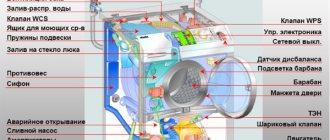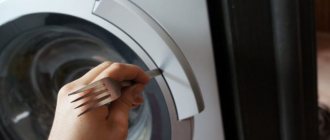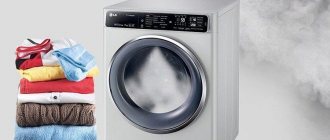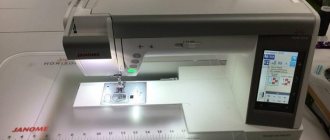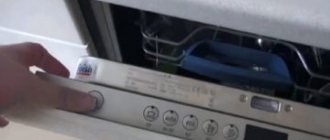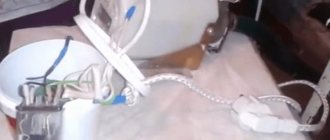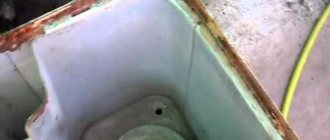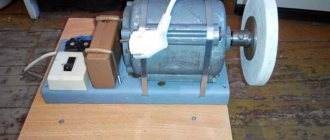Review of Beko WSRE 7H646 XWPTI washing machine with remote control
Another washing machine from the Turkish brand Beko has reached the iXBT.com test laboratory. This time we were lucky enough to deal with a real “family” machine, designed to wash 7.5 kg of laundry. The device is equipped with an inverter motor that is durable, has a steam processing function and the ability to control the washing machine using an application on a smartphone. In addition, the manufacturer clarifies that this model is equipped with the “animal hair removal” function.
During testing, we will try to understand all the programs and functions, make the most of the machine’s capabilities and, in conclusion, talk about our impressions of using the Beko WSRE 7H646 XWPTI.
Characteristics
| Manufacturer | Beko |
| Model | WSRE 7H646 XWPTI |
| Type | front loading washing machine |
| Country of Origin | Russia |
| Guarantee | 2 years |
| Life time* | 10 years |
| Loading laundry | 7.5 kg |
| Energy class | A-20% |
| Maximum power consumption | 2200 W |
| Standby consumption | 1 W |
| Off consumption | 0.25 W |
| Washing class | A |
| Spin class | IN |
| Water consumption/energy consumption per cycle of the reference program (“Cotton Eco”) | 55 l/1.125 kWh |
| Noise level | 61-67 dBA |
| Number of programs | 15+5 programs downloaded from the HomeWhiz app |
| Spin speed | 600, 800, 1000, 1200 rpm |
| Temperature conditions | cold water, 20, 30, 40, 60, 90 °C |
| Soak/pre-wash | There is |
| Extra rinse | There is |
| Imbalance control | There is |
| Child Lock/Protect | There is |
| Delayed start | up to 24 hours |
| Control | Rotary selector, touch buttons, remote via HomeWhiz app |
| Indication | touchscreen |
| Additionally | ProSmart inverter motor, SteamCure steam technology, foam control, animal hair removal, Hi-Tech heating element with anti-scale protection, lint filter, cycle time indicator, Woolmark certificate |
| Loading hatch diameter | 33 cm |
| Network cable length | 1.5 m |
| Weight | 62 kg |
| Dimensions (W×H×D) | 60×84×45 cm |
| Packaging dimensions (W×H×D) | 65×88×52 cm |
| Retail offers | find out the price |
* To put it very simply: this is the period during which parts for repairing the device are supplied to official service centers. After this period, any repairs in official service centers (both warranty and paid) are unlikely to be possible.
Equipment
Beko WSRE 7H646 XWPTI is packaged in a standard way for washing machines: dense foam panels protect the device from the top, bottom and sides. The entire structure is sealed in shrink film, tightened and secured with plastic tapes. The hatch is additionally protected with a thick film. In general, the packaging impressed me as being very reliable and durable.
After removing all the packaging materials, we finally saw the washing machine, in the drum of which we found an instruction manual, a sticker with the main characteristics of the device, a water supply hose, a device for attaching the drain hose and four plastic plugs. The water drain hose and power cord were attached to the washing machine body.
To prevent damage to the motor and internal parts of the machine during transportation, a piece of foam plastic was placed in the lower part of the body on the bottom side. It must, of course, be removed before use. A sticker and a long ribbon that is tied to the foam reminds of this.
At first sight
The body of the car is the usual white color. In general, the Beko WSRE 7H646 XWPTI looks quite traditional: in the center of the front side there is a loading hatch, above it there are controls, and to the left of them is a detergent dispenser. Control is represented by a rotary program switch and a display with indicators and touch buttons. The drain pump (filter) cover is visible in the lower right corner. It opens when you press until there is a characteristic click on its upper part.
The loading hatch door, decorated with contrasting darkened plastic, protrudes approximately 3 cm forward (according to the manufacturer, it is a “layer cake” of two components - ABS and PMMA, which allows for increased reliability and durability). The solution is bright, in some ways even elegant, but quite controversial due to the increase in the dimensions of the machine.
The top panel is not solid and varies in depth, so you can install a small laundry basket on the machine - even if it tries to slide, the low rises around the perimeter will stop the movement.
There are S-shaped notches on the sides of the case. According to the manufacturer, the specially designed shape helps reduce vibrations that occur during washing.
The back of the washing machine also looks familiar: a non-detachable drain hose and power cord, secured with clips on the back wall. There are also four shipping bolts located here that must be removed before installing the machine. The drain hose is approximately 1.5 m long.
The hinges on which the door is suspended are metal and look strong and massive.
The bracket that holds the hatch closed is also metal.
The clamp visible in the recess on the body looks like a plastic one.
The door opens 180°. The diameter of the hatch for loading laundry is 33 cm, so there will be no problems with either loading or removing laundry.
Now let's look inside. But here we won’t see anything extraordinary: a metal drum with a diameter of 50 cm and a depth of 27 cm at the widest part. The ribs are plastic; there are a large number of small holes in the side wall and along the perimeter of the back wall.
The detergent tray is divided into three compartments. Rinse aid should be poured into the central one. To the right of it, oh, there is a compartment for detergent used during soaking. Main wash detergent should be placed to the left of the rinse aid. The compartment is marked with the number "2". The compartment has a built-in dispenser for liquid detergents. If you pull forward and lower the small blue flap, the user can pour 50 or 100 ml of gel into the compartment without a measuring cap or cup.
Finally, we decided to explore the insides of the car a little. We looked from below.
We didn’t find anything unexpected: a tank, a concrete load, a motor, shock absorbers, a drain pump. The tank is plastic and, judging by the barely noticeable traces of glue on the seam, it is not removable.
The top panel was removed.
I was pleasantly surprised that the panel was secured not with cheap screws, but with neat M4 screws with torx slots. A quick inspection showed that all metal threaded connections were made with such fasteners.
We didn't find any surprises inside the car either. They only noted that it will not be possible to bypass the manufacturer’s requirements and integrate it into a kitchen set - the configuration of the front panel, the stiffening rib and numerous fastenings of the appliance components completely exclude this possibility.
Instructions
The operating instructions are prepared in the form of a 40-page brochure. Printed on plain paper. The last two pages contain the terms of the warranty, and the warranty card itself is on the reverse.
The document covers in detail all aspects related to the operation of the washing machine - from the requirements for the place where it will be installed to troubleshooting. Many sections are accompanied by drawings and schematic images; a large amount of information is presented in tabular form, which makes searching and perceiving information more convenient.
Of course, operating the machine is very clear and intuitive, but we still recommend reading the instructions before starting work - there is a lot of really interesting stuff in it. It is especially interesting, and also useful, to understand the meanings of all the indicators, as well as familiarize yourself with the program parameters and tips for effective washing.
Control
The appearance of the control panel is familiar to most users of modern washing machines: in the center there is a rotary knob for selecting programs, to the right of it is a display with indicators and touch buttons. The numbers and indicators on the display glow quite brightly in a gray-blue color under normal conditions.
The selector rotates both clockwise and counterclockwise without restrictions. There are 16 positions in total: 15 programs and “On/Off”. The rotation is step-by-step, with each stop a low sound signal is heard. Let us immediately note that the selector rotates so easily that even a very small child can operate it, who can inadvertently start the car or interrupt an already started cycle. So you can’t do without the “Child Lock” function. The lock works for touch screen buttons. If you turn the selector while the child lock is on, the current wash program will continue.
At the bottom of the display there are 7 labeled touch buttons. Let's call them from left to right:
- selection of washing temperature (from cold water to 90 °C);
- selection of final spin speed (from the “no spin” position to 1200 rpm);
- soaking (turning on/off the soaking/prewash mode);
- steam (connecting the SteamCure mode or the animal hair removal function);
- selection of quick wash (reduction of program execution time by 50%);
- delayed start (up to 24 hours);
- remote control.
Above the buttons are indicators that light up when the corresponding functions are selected.
The “Start/Pause” button, which starts or pauses the program with the selected parameters, is moved outside the display and located to the right of it.
During operation, the digital display shows the time until the end of the wash or the time until the end of the pause (in case of delayed start). The two rows of symbols to the right of the digital display are quite interesting. In the first row from left to right are: a door lock indicator and five wash progress indicators. In the second row, the indicators for adding laundry and lack of water may light up.
Parameters of washing programs and additional functions compatible with them, as well as a detailed description of additional operating modes, are contained in the operating instructions.
Let's look at the most interesting functions and capabilities:
- washing temperature and spin speed can be adjusted in all washing programs;
- By default, the spin speed in almost all programs is set to the maximum - 1200 rpm. The exceptions are: “Shirts” (800 rpm), “Express” (600 rpm), “Gentle” (800 rpm), “Down” (1000 rpm);
- in the first and most used “Cotton” program, the default washing temperature is only 40 °C;
- The steam treatment mode is available in the “Cotton”, “Synthetics”, “Express” programs (execution time increases to 52 minutes), “Dark items/Jeans”, “Anti-allergy”, “Down”, “Shirts”;
- Pet hair removal mode is available in the following programs: Cotton, Synthetics, Darks/Jeans and Shirts;
- The “Easy Ironing” function means that the drum rotates for up to 8 hours to prevent wrinkles in washed and wrung clothes. The laundry can be removed at any time during this 8 hour period;
- It is possible to add laundry after starting the program. If you press the “Start/Pause” button while the special sock-shaped indicator is on the display, the door will unlock;
- Depending on the stage of program execution, you can change its main and additional parameters.
Since the topic of combating coronavirus is especially relevant now, here is a list of programs that guarantee the complete destruction of the virus if it is present on the fabric:
- Cotton up to 90
- Cotton up to 60
- Cotton Eco up to 60
- Synthetics up to 60
- Express up to 90
- Express up to 60
- Stain removal up to 60
- Shirts up to 60
- Anti-Allergy up to 90
- Towel up to 60.
In general, the control of the Beko WSRE 7H646 XWPTI washing machine is simple and intuitive. However, we strongly recommend that you study the instructions in order to successfully use all available features, since the device is equipped with many interesting modes, including remote control.
Remote control
Remote control of the Beko WSRE 7H646 XWPTI washing machine is implemented using Bluetooth technology and the HomeWhiz application. The application is free and can be downloaded from the Google Play or App Store. There are no difficulties with installing and creating an account - prompts on the screen of your mobile device will help even the least technically savvy user to cope. The process of connecting to the machine is described in detail in the instructions, so we will not duplicate it.
Using the application, you can load a specific program into the machine’s memory, set additional functions and set individual washing parameters. There are two configuration options in total.
Using the “Wizard” tab, the user sets washing parameters in three steps: type of laundry, its color and degree of soiling. Based on this data, the application suggests the most suitable washing program or an alternative option. For clarity, the process is presented in screenshots.
The program offers a fairly large selection of types of linen - there are 25 items on the list. Among them: evening dress, winter clothes, jacket, soft toys, bed linen, cardigan, blouses, etc. It seemed to us that the user will always be able to find in the list exactly the clothes or items that he intends to wash.
The second option for setting up the washing process is located on the middle tab and is called “Manual”. Here the user himself sets all the parameters and additional washing functions. Let’s demonstrate the capabilities of the application using the example of the banal “Cotton” program.
As you can see, you can remotely set several functions that are impossible with conventional manual control, for example, the number of additional rinses. The “Night mode” function is interesting. We could not find a description of it anywhere; during experiments we found out that when this mode is started, the laundry does not spin out after washing. Apparently, the machine leaves the noisy final spin process until the morning.
You can add frequently used programs with individual settings to “Favorites.”
The Smart Energy function starts washing during the night electricity tariff period. The time of the night tariff is set in the “Settings” tab.
The menu item in the settings tab “Download cycle” allows you to download the selected program into the machine’s memory.
We found only one drawback - it is impossible to set a delayed start in the application. You can only shift the start to the beginning of the night by enabling the “Intelligent Energy Consumption” function.
In general, the application expands the ability to set custom parameters for the washing process. Perhaps some users will like the simplicity of choice: there is no need to think about which program is best to wash certain items of clothing - just turn on the remote control on the machine, go to the application, find your type of clothing in the list, mark its color, degree of soiling and press the “Start” button.
Exploitation
The installation process of the Beko WSRE 7H646 XWPTI is completely standard and was no different from installing any other washing machine: you need to choose a place to place it with a hard and even surface, then connect it to a source of cold water, sewerage and electricity. Despite the recommendation to contact your nearest authorized service center to connect the machine, the instructions contain detailed installation instructions.
Please note that before connecting the machine to communications, it is necessary to remove four transport fasteners (bolts). The holes from them should be closed with the plastic plugs included in the kit.
Adjusting the height of the legs ensures a level and stable position of the machine on the floor, which prevents increased vibration and damage. Typically, a building level is used to determine the stability of the machine's position.
To prepare the machine for washing clothes, the manufacturer recommends running the “Drum Clean” program. The run must be done in vain, without linen.
According to subjective feelings, the car is quiet. Behind a closed door at night, its noise does not bother even a person with very sensitive sleep. The device stood firmly and reliably in place throughout the testing, and it lasted quite a long time, i.e., if installed correctly, the machine is perfectly balanced.
We were especially pleased with the ability to add laundry at the beginning of the wash. After all, the situation when the machine is running, and you look around and notice, relatively speaking, that a towel was missed during loading, is very common. But you can really add laundry only in the first minute and a half of the cycle. However, it’s great that such an opportunity exists at all.
The Pet Hair feature adds a pre-wash cycle, a wash with more water than normal and an extra rinse cycle to the selected programme.
The Anti-Allergy program, which includes steam treatment and an additional rinse, is ideal for allergy sufferers or small children. Based on the test results, we cannot say what happens with allergens, bacteria and mold, but excess rinsing will definitely have a positive effect on removing powder, which can be the main irritant.
In general, we can say that Beko, of course, follows modern trends in water saving, as evidenced by the “Cotton Eco” program, but does not take these eco-trends to the point of absurdity. As a result, standard programs rinse laundry very well and, under normal circumstances, no additional rinsing is required.
The volume of the machine allows you to wash a large blanket or even a synthetic padding blanket of medium thickness measuring 220x200 cm in it. The maximum load depends on the type of laundry and the selected program. The maximum weight - 7.5 kg - can be washed in the "Cotton", "Cotton Eco", "Express" and "Anti-allergy (steam)" programs. A minimum weight of 1.5 kg is recommended for the Wool/Hand Wash and Down programs.
The shortest wash time is obtained by selecting the “Express” program and turning on the additional “Quick Wash” function. The cycle duration in this case is only 19 minutes at 30 °C and spin at 600 rpm. Not bad for refreshing slightly soiled items.
As expected, the most economical program is “Express” + “Quick Wash”. Declared resource consumption: 39 liters of water and 0.15 kWh, the most energy-intensive is “Anti-allergy (steam)”: 120 liters and 2.80 kWh.
The machine, of course, locks the door while the program is running, but immediately after the end the door opens freely. That is, the inscription “End” appears on the display simultaneously with the end of the drum movement and the click of the lock. This is what distinguishes it from all the machines we have previously dealt with.
The main points regarding control were described in the corresponding section; in all other respects, the operation of a washing machine is no different from the operation of any other machine of this type. Everything is standard, absolutely everything.
Care
According to the instructions, “regular cleaning of the product will extend its service life and avoid many problems.” So, to avoid unnecessary troubles with your washing machine, you should:
- after every 4-5 washing cycles, clean the detergent dispenser;
- Use the Drum Cleaning program every 2 months. It starts when you turn on any washing program and long press the “Soak” button;
- regularly wipe the machine body with soapy water and wipe the control panel with a damp soft cloth;
- When dirty, clean the inlet filters on the inlet hose;
- The pump filter should be cleaned at least once every 3 months.
The procedures for the last two cleanings are described in detail in the instructions. According to the description, cleaning the filters of the inlet pipes seemed labor-intensive to us. And only because it is necessary to disconnect the inlet hose.
Our measurements
In our previous testing of the washing machine, we tried to roughly estimate the volume of the drum. We assume that the shape of the drum is cylindrical (we perfectly understand that the shape is far from a regular cylinder, but it is necessary to rest on at least something). In this case, we have a cylinder with a diameter of 50 cm and a depth of 27 cm. Its volume is therefore 53014 cm³. Note that we calculated the volume based on the maximum diameter and depth, that is, in fact, the volume of the drum is smaller and is therefore about 45-50 liters.
The power of the machine during heating and washing fluctuates around 2100 W. During the “Cotton” program cycle with standard parameters (wash at 40 °C, spin at 1200 rpm), the machine consumes 0.876 kWh and 47 liters of water. At the same time, 2.2 kg of laundry was washed.
Wash
Let's continue the tradition of previous testing and track minute by minute the stages of operation of the main Cotton program. We summarize the obtained data in a table.
| Time | Time on display | Action | Water consumption |
| 00:00:00 | 2:17 | program start, pump operation, water filling | |
| 00:01:55 | 2:14 | end of water filling, start of washing | 14 |
| 01:20:46 | 0:55 | stop, periodic slow rotation of the drum | |
| 01:24:03 | 0:52 | drain, slowly rotate the drum, add a small amount of water | 15 |
| 01:30:51 | 0:45 | spin | |
| 01:33:50 | 0:43 | water inlet | |
| 01:35:35 | 0:42 | rinsing | 30 |
| 01:45:40 | 0:33 | drain, slowly rotate the drum, add a small amount of water | 31 |
| 01:48:25 | 0:30 | spin | |
| 01:52:03 | 0:26 | water inlet | |
| 01:53:50 | 0:25 | rinsing | 46 |
| 02:03:20 | 0:16 | drain, slowly rotate the drum, add a small amount of water | 47 |
| 02:14:53 | 0:09 | final spin | |
| 02:22:15 | 0:01 | slow drum rotation | |
| 02:24:03 | 0:00 | pump operation | |
| 02:24:30 | End | shutdown |
Let's summarize. In fact, the program lasts a little longer than the machine initially shows - this was confirmed by further observations. To wash 2.2 kg of laundry in the “Cotton” mode, 14 liters of water are poured and the process lasts about 1 hour 20 minutes. The machine then performs two rinse cycles, each using about 15 liters of water. It is unclear the purpose of the water that is poured in immediately after draining during the slow rotation of the drum between cycles. Maybe our readers will be more knowledgeable on the issue.
The washing cycle proceeds as follows: the drum rotates for about 25 seconds in one direction, then pauses for five seconds and rotates in the other direction. During the cycle, the speed of rotation of the drum changed - at the beginning of the wash it was less, towards the end the rotation of the drum became more intense.
We were curious if the rinse cycle is the same for all programs. To do this, we started “Rinse” and measured the duration of the cycles and water consumption.
| Time | Action | Water consumption |
| 00:00:00 | program start, pump operation | |
| 00:00:43 | water inlet | |
| 00:02:33 | rinsing | 24 |
| 00:06:37 | draining | |
| 00:09:20 | pouring a small amount of water, slowly rotating the drum, pumping | 25 |
| 00:14:53 | spin | |
| 00:22:23 | slow drum rotation | |
| 00:23:55 | pump operation | |
| 00:24:25 | “End” inscription on display, door unlocking |
The official rinse duration is 18 minutes, the actual duration is almost 25. The rinse itself lasts only about five minutes, unlike the rinse cycle for washing (about 10 minutes). But the process takes place in a larger amount of water - 25 liters versus 15. Only a little electricity is consumed per cycle - 0.043 kWh.
Spin
We were also interested in the real efficiency of pressing, which we decided to measure in grams of water per gram of cotton using the formula: (weight of pressed material - dry weight) / dry weight. 10 terry white towels from Ikea with a total weight of about 2 kg were used as reference linen.
| Spin speed, rpm | Remaining water per gram of dry laundry, g |
| 1200 | 0,60 |
| 1000 | 0,65 |
| 800 | 0,74 |
| 600 | 0,96 |
Noise
The noise level was measured in a room where washing machines are often located - a standard bathroom (1.75 x 1.50 m, ceiling height 2.50 m). The sound level meter was located at a level of 1 m from the floor and at a distance of 1 m from the washing machine, in the center of the front side.
| Operating mode | Noise level, dBA |
| The washing machine is turned off (general noise level in the room) | 36 |
| Bay of water | 60-64 |
| Drum rotation during washing | 52-55 |
| Drain | 54-58 |
| Intermediate spin | 62—64 |
| Rinsing | 55-58 |
| Final spin 1200 rpm | 65-67 |
Practice tests
Let's continue the tradition started in the previous testing: we will stain snow-white IKEA towels with various types of organic dirt and evaluate how well the machine will cope with removing stains.
Program "Cotton"
As experience shows, the “Cotton” program is most often used in everyday life. The default temperature confused us a little. In order to find out how well cotton can be washed at 40°C, we conducted this test.
They dripped and filled snow-white cotton terry towels with six types of dirt. After that, we left the towels for a day so that the dirt could dry thoroughly:
Blood
Cocoa
Ketchup
Oil
Soy sauce
Red wine
For washing, we used universal powder for white and colored laundry from one of the largest international manufacturers. The dosage was calculated according to the instructions on the powder packaging. We washed it, as already indicated, in the “Cotton” program with default settings, we did not connect any additional functions.
After washing, we dried the towels for 24 hours and took photographs. The fabric still bears traces of blood, cocoa and red wine. The red wine stains remained especially bright. The remaining towels were white, so it was impossible to determine which of them had soy sauce, oil or ketchup on it. When assessing the results, you need to remember that the contaminants were not, as they say, fresh and had time to dry well within a day in a well-heated room.
Blood
Cocoa
Red wine
So, the result was quite expected: the most persistent organic stains - blood, cocoa and wine - were not completely washed off. This is understandable - miracles do not happen; You can successfully wash cotton items at 40°C if they are not very dirty. To remove stains, the machine is equipped with a special program. This is exactly what we used in our next test.
Stain Removal Program
We repeated the staining procedure: we applied several blood, cocoa, and red wine stains to clean white towels. Then dried for 24 hours.
Blood
Cocoa
Red wine
The same powder and dosage was used as in the previous test. The Stain Removal program involves washing in water heated to 60 °C. After washing, the towels were dried for 24 hours and photographed.
Blood (virtually indistinguishable)
Cocoa
Red wine
Blood and cocoa stains were washed off well; Traces of red wine are most clearly visible on the fabric. Although the results are much better than in the previous experience.
Unfortunately, the towels did not return to their original whiteness. The stains have faded greatly and look less noticeable than after washing on the “Cotton” program, but they are not completely removed. Perhaps because clothes with such contaminants usually end up in the wash immediately. Our stains dried perfectly before treatment.
We planned to return the towels to their original whiteness using bleach and the Cotton program, setting the wash temperature to 90 ° C and the steam function. The barely visible stains from blood and cocoa have been completely washed away, while the stains from red wine have become much paler, but if you know that they are there and look closely, you can distinguish them.
Everyday wash
The machine was in use for about a month as the main washing machine for a family of four. A lot of things were put through the washing machine: various types of clothes (from jeans to business dresses), outerwear (down jackets and children's overalls, thoroughly smeared in city dirt and sand), bed linen, a large bedspread, curtains. There were no comments regarding the operation of the machine. Various programs and additional functions adequately coped with the assigned tasks.
Unfortunately, we were unable to test the pet hair removal function due to the lack of pet hair. However, the stated features - a pre-wash cycle, washing with more water and an additional rinse - allow us to expect that pet hair will be removed more effectively than in a program without a connected function.
conclusions
We were extremely pleased with the Beko WSRE 7H646 XWPTI washing machine. The ability to load 7.5 kg of laundry into it, treat bed linen or children's clothes with steam, wash difficult-to-remove pet hair, select the spin intensity from 600 to 1200 rpm - all these are the undoubted advantages of the device. The programs presented on the control panel of the washing machine can satisfy a very demanding and thrifty person, although most of us will still continue to use two or three of the most popular ones.
Management does not cause any difficulties. If you want to expand the additional functions of the programs, you can connect a remote control. The HomeWhiz application allows you not only to set custom washing parameters or, based on items, degree of soiling and color, to use the program offered by the application, but also to set the smart energy mode, night mode, set the number of additional rinses, etc.
Unfortunately, we cannot assess the durability of the machine - the testing does not provide for the study of this parameter, otherwise this article would have to be published only in a couple of years. However, the manufacturer's stated service life of 10 years and a two-year warranty for the device inspire some optimism. The inverter motor comes with a 10-year warranty.
We will include only one parameter among the disadvantages, which can be assessed as a matter of taste, because only the author of the review does not like this feature. Due to the protruding hatch, the depth of the car increases. The design of the car is very attractive and even stylish thanks to the large hatch made of plastic in a contrasting color to the body. However, in a small bathroom the machine may look somewhat bulky.
The second point is also insignificant, but it is better to know about it. The actual duration of the programs is slightly longer than stated. We recorded a discrepancy of 5-7 minutes.
pros
- load 7.5 kg
- simple and intuitive controls
- steam technology
- Pet hair removal function
- spin at 1200 rpm
- possibility of remote control
- Several interesting features in remote mode, including smart power consumption
Minuses
- the darkened plastic hatch protrudes forward
- programs are 5-7 minutes longer than stated
Functional set
In order to use the washing machine to the limit of its capabilities, it is better to get acquainted with the offered functionality in addition to the modes. The presence of special options will significantly facilitate and secure the washing process, which cannot but please consumers. Thus, VEKO compares favorably with several “tricks”:
- removal of lint and wool, for which a special mode is provided with an increased number of cycles and rinses;
- locking the panel from children and accidental pressing;
- aqua-fusion or economical consumption of detergent with uniform use of powder throughout the entire washing process;
- aquawave, also known as imbalance control, designed to evenly distribute laundry along the walls of the tank without lumps or ligaments;
- auto-restart of the started cycle after a power surge or power outage in the house;
- a touch sensor that monitors the water level in the tank to prevent overflow;
- half load, allowing you to wash a small amount of laundry faster and more economically.
What other useful features does the Beko SMA have?
Manufacturers are constantly improving washing machines, giving them new functions. Thanks to new developments, Beko machines have acquired the following capabilities:
| Name | Description |
| Overflow protection | Water level monitoring system. If the level is exceeded, the device turns on the drain |
| Restart | If the power goes out, you can resume the interrupted program at the point at which the power outage occurred |
| Blocking | Locking the control panel from accidental pressing. Prevents children's pranks |
| Anti-wool | Thoroughly remove hair from items |
| Aquafusion | Saving washing powder - it remains in the drum until the cycle is completed |
| Aquawave | Drum tracking system - prevents imbalance. Linen does not wrinkle |
Making sure the unit is ready
Before starting the washing machine, you should make sure that the machine is working and understand its basic controls. First of all, open the user manual and decipher all the icons and buttons on the machine’s dashboard. Next, we check its readiness for the upcoming wash, paying attention to four important points.
- Are the fastenings secure? Ideally, the installation of a new washing machine should be carried out by a professional. Loose clamps on the inlet and drain hoses “fly off” even during the first wash and lead to leaks.
- Have the shipping bolts been removed? The drum tie is necessary for safe transportation, which ensures the safety of the shock-absorbing system. However, it is prohibited to operate the washing machine with a fixed tank - the equipment will not be able to “accelerate”, which will lead to severe internal damage to the machine. All screws holding the drum reservoir must be removed and replaced with the plastic plugs included in the kit. It’s easy to find out how many fasteners there are on a particular Beko model in the instructions.
Free warranty service does not apply to damage caused by transportation bolts that have not been removed!
- Is the drum clean? Often, components are placed inside the washing machine, which must be removed before starting the machine.
- Has all the store “protection” been removed? For safety reasons during transportation, equipment is covered with adhesive tape, secured with plastic ties and covered with foam plastic. Before operating the machine, all foreign objects are removed.
If the answer is “yes” to all questions, then you are allowed to start the machine for the first time. However, the start cycle is not considered a full wash - it is called a technical start. We will tell you further how it is carried out and why.
Basic modes
Pictures take up less space, they are more impressive and are more suitable for the modern design of automatic washing machines (WMA). But their understanding is often difficult: not everyone will guess the first time what this or that picture means—instructions are used to decipher it. And most importantly, hand-drawn symbols are not standardized - each manufacturer is free to create them at his own discretion.
The Beko washing machine may not look so impressive because of the inscriptions, but they make operation as comfortable as possible. But the inscription is not a carrier of all the information - the names of the modes do not indicate either temperature or speed. Before you turn on programs, you should read their descriptions to know what they are suitable for.
| Program names | Description | Approximate process time, min |
| Cotton | Wash cotton linen in hot water. Range - 60-90 °C. You can even boil cotton fabrics without harming them. An option for heavily soiled cotton and other durable materials. Cotton fabric absorbs water strongly, so the laundry is wrung out at high drum rotation speeds | 120-150 |
| Ecocotton | For cotton items, subject to minimal energy costs | 180 |
| Dark fabrics | Good for synthetics and cotton items. Moderate temperature prevents shedding | 100 |
| Synthetics | For synthetic and combined materials. Moderate water heating prevents shedding and deformation | 105-120 |
| Shirts | These delicate items can be washed at 40°C. The program prevents bruising | 120 |
| Mix 40 | A universal mode in which you don’t have to separate the laundry - load it into the machine, regardless of the type of fabric. You can load synthetics and cotton items together into the drum. | User selection |
| Express | Quick wash mode. Speeds up programs for cotton and synthetics. Use for lightly soiled items. Condition - 50% drum load | 90-115 (depending on fabric) |
| Pooh | For blankets and down jackets, but can also be used for ordinary products | 60 |
| Sport | Wash clothes for sports. Removes stubborn stains | 100-140 (depending on fabric) |
| Mini | For small batches of not very dirty products | 30-90 (depending on temperature) |
| Handwash | For gentle care. Delicate fabrics that cannot be washed in a regular machine are washed. Eliminates deformation and wear | 40-55 |
| Wool | For woolen items. To prevent the wool from matting, use slow rotation of the drum | 60-70 |
| Kids' things | Washing with thorough rinsing - thanks to the large volume of water | 160 |
| Self-cleaning | Self-cleansing. The cycle starts with an empty drum | 120 |
| Jeans | For denim items. Prevents shedding | 100-105 |
| Refreshing wash | For easy freshening of slightly soiled clothes. Eliminates unpleasant odors | 17 |
| Economy mode | Cool water - 20 °C. Only for items that are not heavily soiled. It is recommended to use liquid detergent instead of powder. | 100 |
The duration of the programs given in the table is approximate, it is different for each model. You can find out the exact time in the instructions for a specific model.
